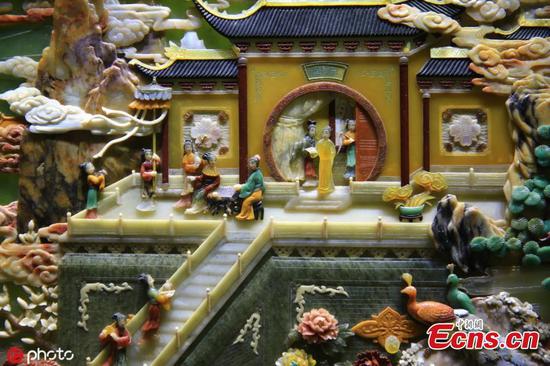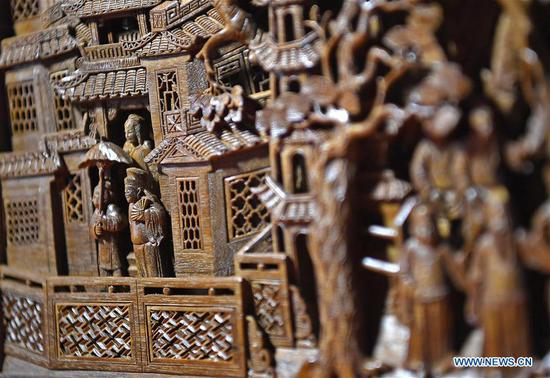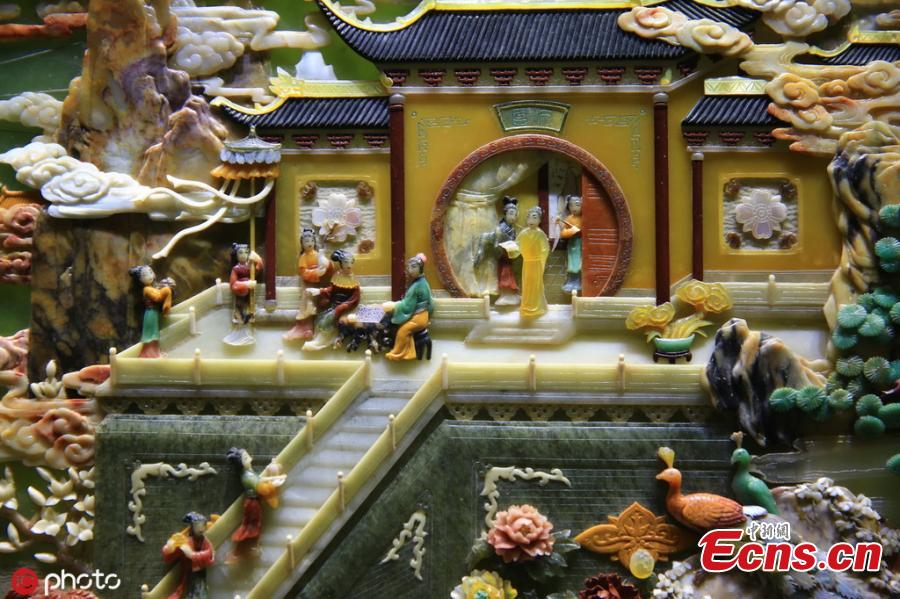
A table screen, made using the ancient craft of Baibaoqian ("hundred-treasures inlay"), features a well-known tale of two gentlemen of the Han Dynasty (206 BC?220 AD) - Liu Chen and Ruan Zhao - who stumble upon a magical realm of immortals on the Tiantai Mountains. Baibaoqian originated in the Ming Dynasty (1368-1644) and peaked during the Qing Dynasty (1644-1911). The craft features the inlaying of engraved work with precious stones or various metals. (Photo/IC)
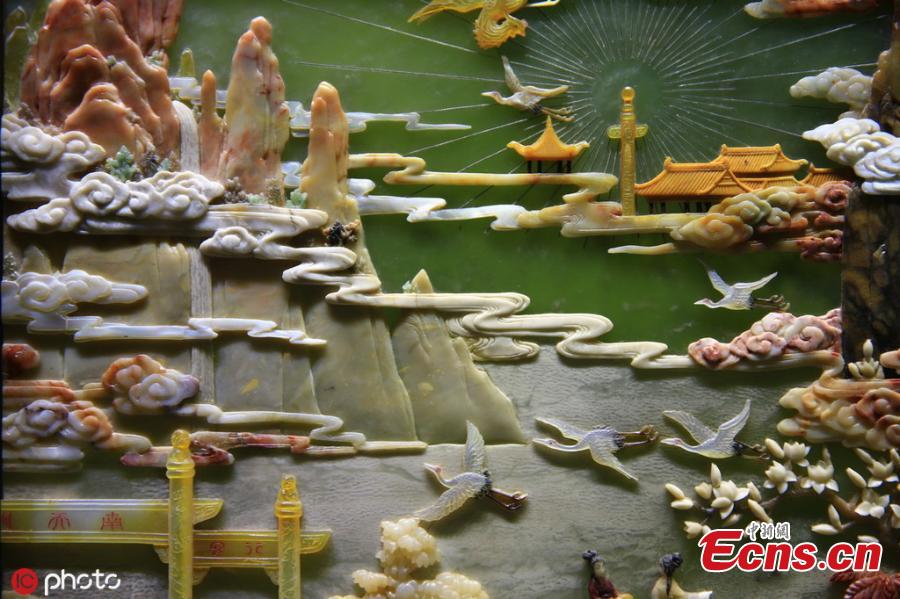
A table screen, made using the ancient craft of Baibaoqian ("hundred-treasures inlay"), features a well-known tale of two gentlemen of the Han Dynasty (206 BC?220 AD) - Liu Chen and Ruan Zhao - who stumble upon a magical realm of immortals on the Tiantai Mountains. Baibaoqian originated in the Ming Dynasty (1368-1644) and peaked during the Qing Dynasty (1644-1911). The craft features the inlaying of engraved work with precious stones or various metals. (Photo/IC)
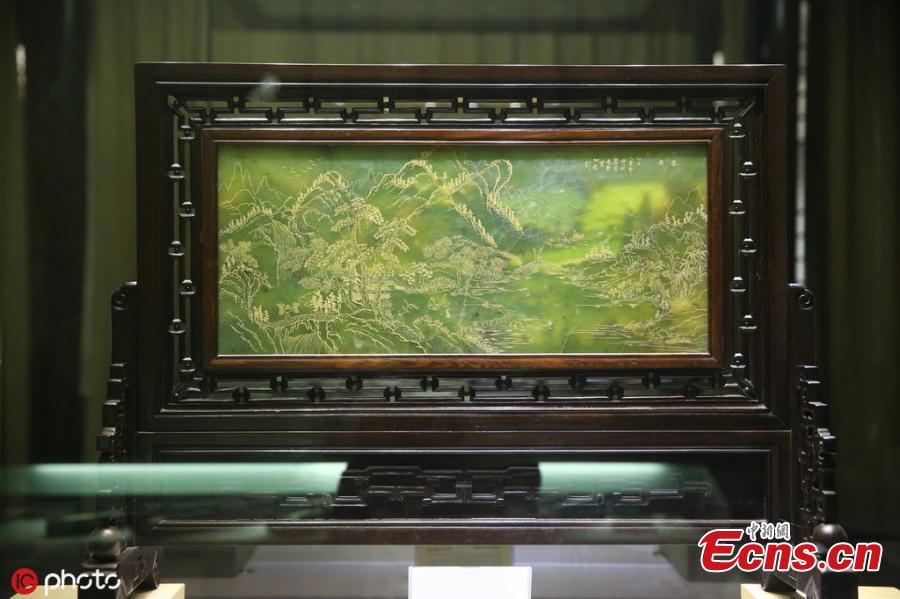
The back of a table screen, made using the ancient craft of Baibaoqian ("hundred-treasures inlay"), features a famous scroll engraved on jade. (Photo/IC)











